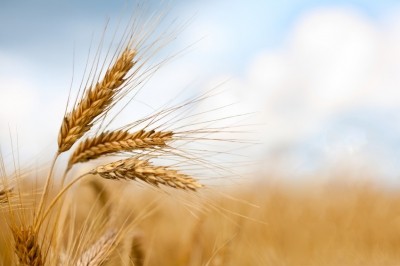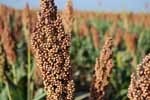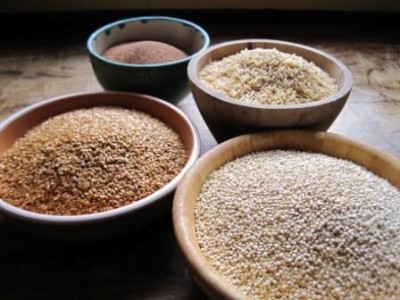Dispatches from the Whole Grains on Every Plate conference
The rise and rise of whole grain: Whole Grain stamp now on 7,600+ products in 35 countries
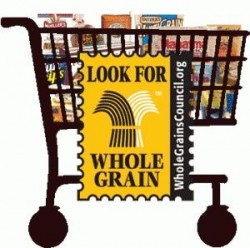
Spurred on by the 2010 Dietary Guidelines for Americans (which recommend we get at least three servings of whole grains a day) and continued interest in ancient grains, red and black rice and quinoa as ‘on-trend’ ingredients, manufacturers are now adding whole grains to everything from frozen entrees to soup, said the Whole Grains Council, which organized the three-day event in San Antonio along with Oldways.
Strong growth in ‘late adopter’ categories such as soup, frozen entrees and baby food
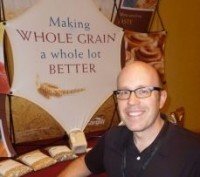
While breads, cereals and snacks still account for 26.6%, 25.7% and 18.8% respectively of products using the stamp, ‘main dishes’ (pizzas, entrees, tacos etc) and ‘breakfast items’ (waffles, pancakes, muffins etc) now account for 8.8% and 5.4% respectively, delegates were told.
Data from SPINS - which shows that sales of products with the stamp grew 9% in the year to June 9, 2012 - also reveals strong growth in ‘late adopter’ categories featuring the stamp such as frozen breakfast foods, frozen kids foods & baby foods, and soup (up 77.4%, 51.6% and 51.3% respectively).
Meanwhile, data from Mintel’s Global New Products Database shows that in the first four months of 2012, there were 1,268 new launches making whole grain claims, which if multiplied by three to give an estimate of what the full-year picture might look like (3,804 products) would represent a 13% increase over 2011 (3,378 products).
As for how much whole grain is being used, while eligibility for the Whole Grain stamp starts at 8g whole grains per serving, most products featuring it now contain significantly more, with almost two-thirds now containing at least twice this amount, said the Whole Grains Council.
50 shades of beige...
However, in the US, whole grain volume sales have stalled somewhat in the past few years, in part because the biggest whole grain categories (bread, cereals) have experienced volume declines, said ConAgra Mills director of consumer insights David Sheluga.
"I call it the 50 shades of beige phenomenon. Beige foods are on the downslide in the center of the store."
Compass: We’ve made the financials work
But how easy has it been to switch to using more whole grains?
Jennifer Ignacio, nutrition communications manager at Compass Group North America, said her firm had worked hard to include whole grains in all of its menus, from doing straight swops such as replacing white hamburger buns with whole wheat versions, to sampling initiatives designed to encourage people eating at cafeterias it supplies to try whole grain options.
In many cases, the challenge is perception, she said. “People think they won’t taste good, so we need to encourage sampling and work on presentation, making whole grain options look exciting.”
In some cases, consumers might be reluctant to switch from white to brown rice, she said, but might be willing to try a whole grain option they haven’t tried before, such as quinoa.
Asked how challenging it had been from a cost perspective to incorporate more whole grain products into menus, she said that while whole wheat bread might cost more than white bread, changing an entire menu to include more whole grains does not necessarily cost more, because savings might be made in other areas.
“We’ve managed to make the financials work.”
Corn and whole grains
While a lot of the buzz is around ancient grains, whole grain corn products are also gaining traction as formulators like the texture, color and taste they deliver, Cargill Corn Milling technical services manager P Keith Smith told FoodNavigator-USA.
“They work very well in breads and rolls and muffins.”
From a nutritional perspective, the aleurone layer in wheat is the most interesting part, but you can’t out a wholegrain stamp on it…
While the preoccupation with whole grains (comprising the bran, germ and endosperm) is great from a nutritional perspective, it is important to remember that individual components of grain have an important contribution to make as well, said Jeff Casper, R&D manager at Cargill joint venture Horizon Milling.
“From a nutritional perspective, the aleurone layer in wheat - the outermost cell layer of the endosperm, is something we are very interested in.
“We’ve been extracting it and selling it for several years and a competitor - Kampffmeyer - is also promoting a similar product in Europe as ‘Vein of gold’.
“But you can’t put a Whole Grain stamp on it, so it’s a harder sell, even though it is high in betaine and lysine - which is unusual, rich in antioxidants, vitamins, minerals and insoluble fiber.
“I think the whole whole grains debate is kind of going in two directions. It’s looking at the nutritional benefits of whole grains [in general], and then it’s looking at the nutrition inside the whole grains.”
Some gluten-free products with whole grains have not got much fiber in them at all
For example, not all whole grains are the same from a nutritional perspective, with sharp variations in levels of fiber, vitamins and minerals, he said.
“Some gluten-free products made with whole grains have not got much fiber in them at all.”
Folate deficiency?
Meanwhile, if we replaced all the refined white flour in the American diet with wholegrain four, we’d have an issue with folate deficiency, as enriched white flour is the primary source of folate for many consumers, he observed.
“Obviously you can get folate from other sources such as vegetables, but for many people, enriched refined white flour is the primary source, so if we’re going to switch to whole grains, we need to encourage people to get folate from somewhere else.”
